Sam Hudecki, storyboard artist-concept designer-dream illustrator
“I like that place where drawing leaves some empty spaces that allow you to fill them in with your imagination.”
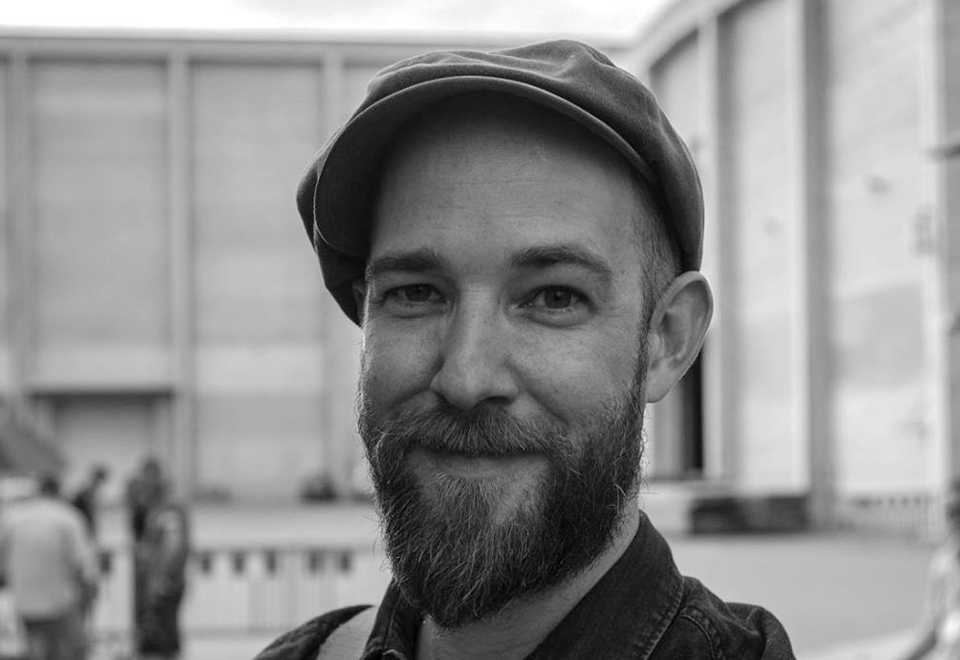
Photo: Michael Legato
Sam Hudecki plays an essential role in bringing some of today’s most artful, thoughtful and respected films to light. A key collaborator on all of director (and fellow Kickass Canadian) Denis Villeneuve’s most recent projects, Sam’s concepts and storyboards have helped illuminate Enemy, Prisoners, Sicario, Arrival, Blade Runner 2049 and the upcoming Dune.
In the nearly two decades since he entered the film world, Sam has worked in a variety of departments, including camera, art and costume. They all excite him. But seen through his lens, none get to the core of each film the way storyboards do.
“Storyboards are the centre of the translation of everything, lifting the words off the page into becoming a film,” he says. “It’s the beginning of a search, in a way, for the style and the approach to each film.”
When Sam talks about storyboarding, I picture a prism. He describes the creative satisfaction of condensing, or refracting, a film’s overall vision into its component parts—shots, scenes, moods, style. But what Sam uniquely brings to each project goes well beyond the job description of “storyboard artist.” He begins with the whole idea in mind, and then lets light flow through so he can closely examine all the elements, filtering them with his rare perspective, distilling them down to their purest form, and translating them into the visible spectrum so we can all appreciate the effect.
For him, the ultimate pursuit of storyboarding is to be able to effectively channel ideas to other people, to audience members. “I caught on to the concept of trying to align something that you feel is a strong idea personally, and putting it to a test in such a way that it will convey something to the people sitting in the theatre,” he says. “Not just turning your camera inwards, but finding something that allows other people in. That’s what I find magical.”
He describes the process of working with Denis as being fluid, a conversation, “staring up at the sky and musing.” Among many things, they make a point of exploring what makes us all, as humans, react in a visceral way, and “what is in that realm that crosses over between your life and a dream,” says Sam. “My job is to illustrate (Denis’) dream.”
Sam’s ability to interpret someone’s thoughts with such visual richness, not to mention soul and sensitivity, is an extraordinary thing. It’s a level of communication most of us never reach, and it stands out even among the other very talented people working on Denis’ films. In 2016, on the set of Blade Runner 2049, a crewmember commented that Denis speaks three languages: French, English and Sam. “I pause a lot when I talk,” says Sam. “I have a tendency to end a sentence with ‘and,’ and then carry on the conversation with images in my mind.”
With such an intricate thinker, it’s hard to sum up the whole in a just few paragraphs. Still, here is one look at some of the many angles that shine from the incomparable lightness of being Sam Hudecki.
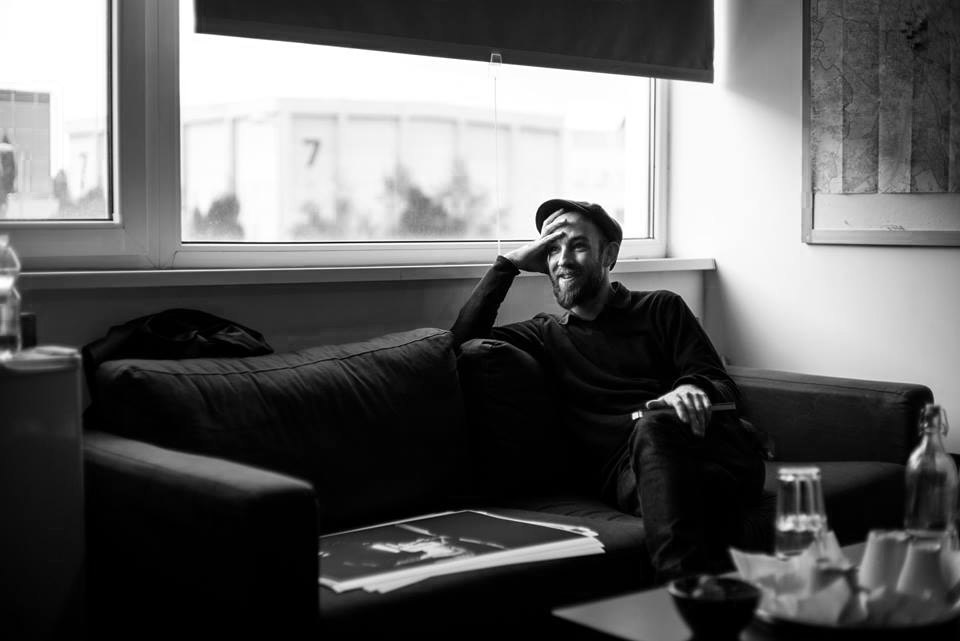
Photo: Michael Legato
First rays
Sam was born and raised in Toronto, Ontario. The eldest of four children, his roots reach back to Europe; his father’s parents were Polish and Irish, and his mother’s French lineage can be traced to Quebec’s Île D’Orléans as far as the 1600s.
“I come from a family that I consider to be a whole bunch of really Kickass Canadians,” says Sam. “I think I can attribute any kind of creativity in life to the wonderful people that I was really lucky to grow up with. They really span an array of disciplines.”
His mother, Pat Dumas-Hudecki, “is an incredible painter and just a great spark.” His father, John Hudecki, is a writer and songwriter, with hundreds of songs to his name, and was also a theatre director and producer. Their passions and pursuits made storytelling a big part of Sam’s upbringing. “I saw a lot of films as a kid,” he says. “We watched a lot of classics. And that’s where drawing and writing and thinking imaginatively came into the picture.”
Languages were another fascination, thanks to his father’s poetry and the family’s magnetic pull toward reading. “They’re one of the ways we communicate,” he says. “I’m intrigued by how we exist as humans and how language shapes our experience.”
French in particular has been important for him to speak and understand. As his mother’s tongue, Sam is committed to preserving his French language skills “as best I can, while living outside of Quebec.”
Growing up in Ontario, Sam also spent a lot of time outdoors, exploring Georgian Bay’s 30,000 Islands and teaching canoeing in Algonquin Provincial Park. He has always felt a strong connection to nature, and remains humbled by “the power of the expanse of the great lakes and the Appalachians.”
But every experience, inside or out, circled back to imagination. “I think it was my natural kind of inclination, even during math class, to do sketches,” says Sam. From Halloween costumes to makeshift floor plans for the family, he was constantly drawn to putting images on paper. “I’ve been trained to visualize. It’s something that I’ve just always done.”
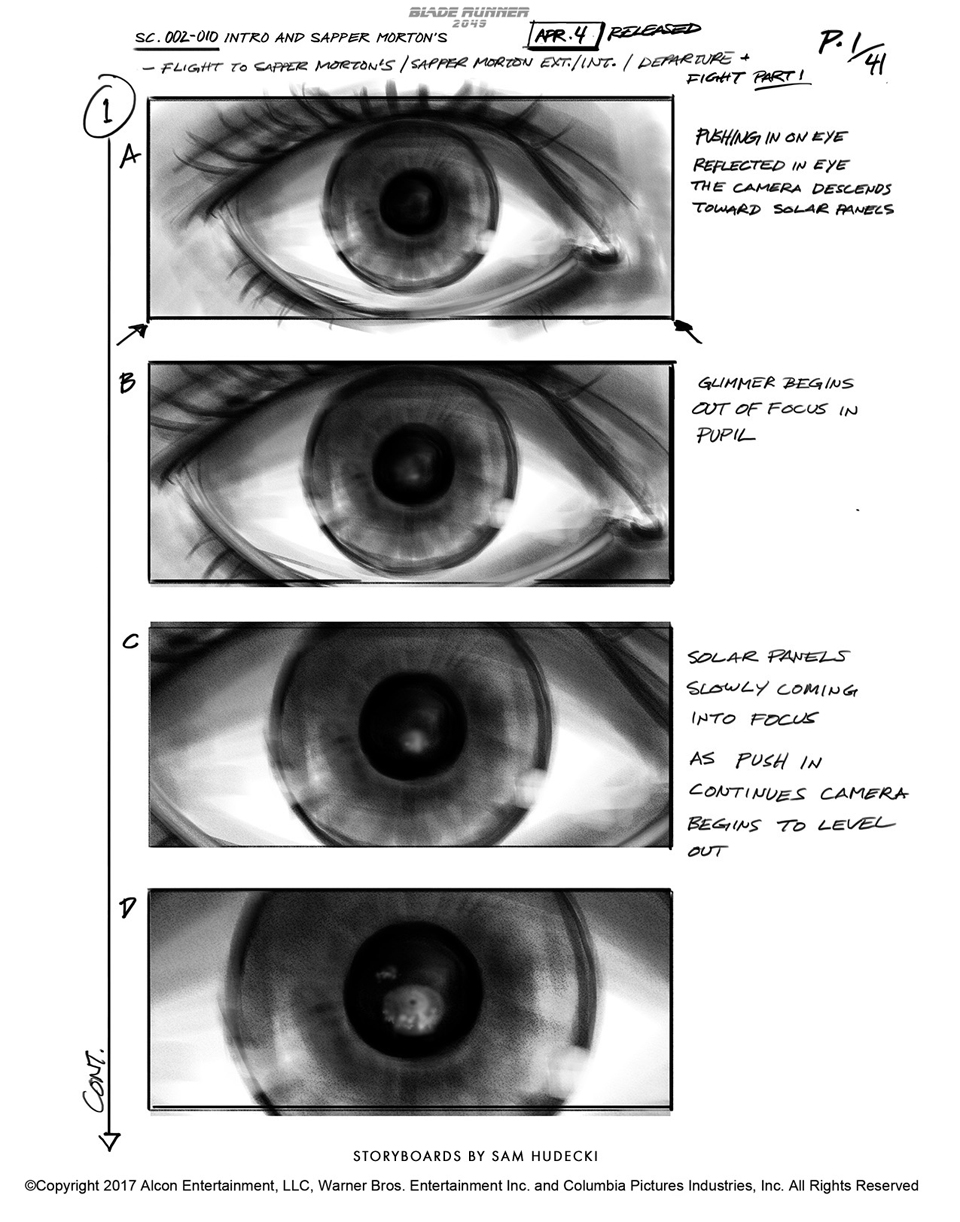
“This is the initial plan for the intro to ‘Blade Runner 2049.’ Though similar to the final cut, it involved pushing in and through the pupil to reveal the reflection of the solar farms: Going into a ‘dream.'”
From red to violet
Throughout high school, Sam was torn between pursuing music, writing and visual art. He played saxophone and clarinet in school bands and musicals. And whether in sketchbooks (or math notebooks!) or his mind’s eye, he continually crafted stories through words and images. So, rather than choosing just one form of creative expression, he found a medium that marries them all.
After graduating from Humberside Collegiate Institute in 1998, Sam enrolled at Queen’s University to study film (with a minor in English Literature). “What I found so fascinating about film is that it ties everything together,” he says. “All of the arts, all of the humanities. It really allows you to explore any realm.”
Even as a student, Sam displayed the signature passion and dedication that has defined his professional life. For production classes, he always booked the last slot in the editing room so he could stay there “until the newspaper dropped on the doorstep,” eking out every possible opportunity to learn and create. “I was enthralled by the power to shape image, the timing, sound, all of that,” he says. “The feelings that you can evoke through that process are very powerful.”
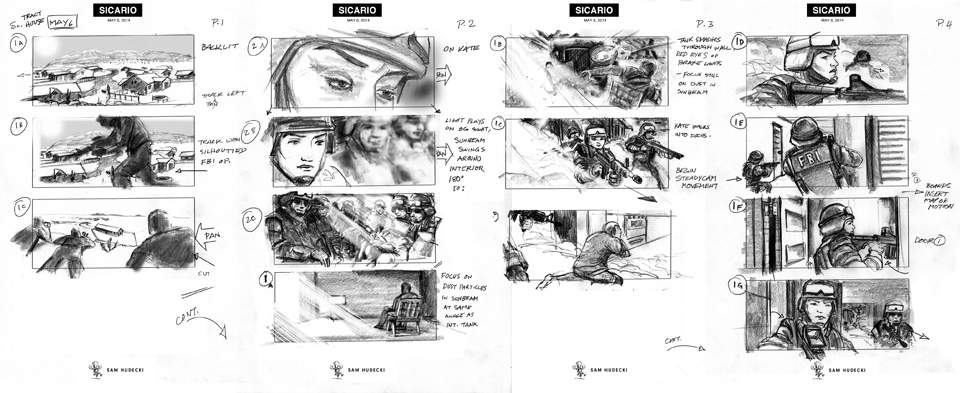
“Excerpts from the beginning of ‘Sicario.’ Introducing both Kate [played by Emily Blunt] and the sun as a stylistic element in the film. What was initially thought to be a steadicam shot was in fact handheld by cinematographer Roger Deakins.”
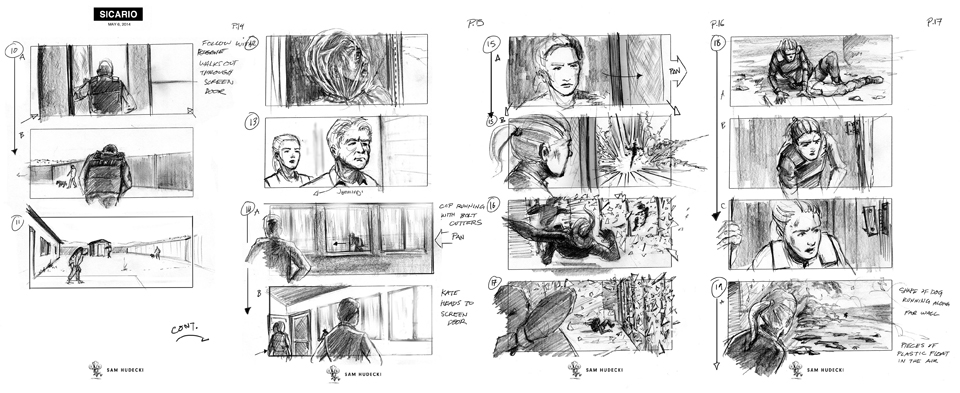
“For ‘Sicario,’ there was much discussion about what makes an explosion so violent. Rather than foreshadowing by cutting to the grenades before they go off, we opted to play on the unexpected suddenness of an explosion.”
His talents and unique perspectives didn’t go unnoticed. In the words of Kickass Canadian Clarke Mackey, a filmmaker and one of Sam’s production professors at Queen’s, “Sam had a painter’s eye for colour and composition. He was open to experimentation and tried to do a lot of visual things outside the norm.”
Sam’s potential was so evident that he was offered the inaugural Queen’s Film and Media internship. During the summer before his final year of undergraduate studies, he earned class credits by working in the Toronto area as a camera assistant on a series of nature documentaries called The Secret World of Gardens. He calls it “an astounding opportunity” because, at the time, “my dream was to be a National Geographic photographer or cinematographer. I loved images and lighting, and what you can capture in a frame.”
The placement exposed Sam to all those aspects of film, and many more. Focusing in slow motion on minute details of nature, “you’re collapsing a moment, slowing life down,” he says. “You’re making sense of a world that’s kind of in process around you, sifting those moments and making stories of out, like, a bee tripping.”
After graduating from Queen’s in 2002, Sam spent a second summer working as a camera assistant on the nature documentaries. (That was also the summer I got to know Sam, when I had the amazing good fortune of having him as a camera assistant on my short film, Sight Lines.) And then he began the migration to the art department, a winding route that eventually took him from art department apprentice on Talk to Me, to graphic artist on The Incredible Hulk, to assistant art director on Splice, to graphic designer on Antiviral.
“I was always pushing to get to the core of the creative process,” says Sam. “And I was doing that in such a way that I was just trying to work in film in Toronto, and kind of break through with that in the arts department. One of my first jobs in an art department involved a lot of research as well (as graphic design and motion graphics), and it showed me instantly that, working in film, when you’re really digging into creating a visual world that tells a story, especially when it has to do with something based in reality, you have this great excuse to continue learning about anything. I love that. It’s all part of a process, and to continue learning is a real treat.”
“Sam Hudecki is a warm soul, an amazing mind and an expert with the pen. I’m in awe of his success working at the top tier of filmmaking, but not surprised by it. One of the coolest moments with Sam was going to a movie with him, and seeing recognition pop into his face when the trailer for Blade Runner 2049 came up. Right away, he knew the images. He’d drawn them before they existed and his vision was part of their shape and texture. It hit me what an intense level of creativity he works at, and excels in.” —Kickass Canadian Joel McConvey, filmmaker, writer, fellow Queen’s Film and Media alumnus
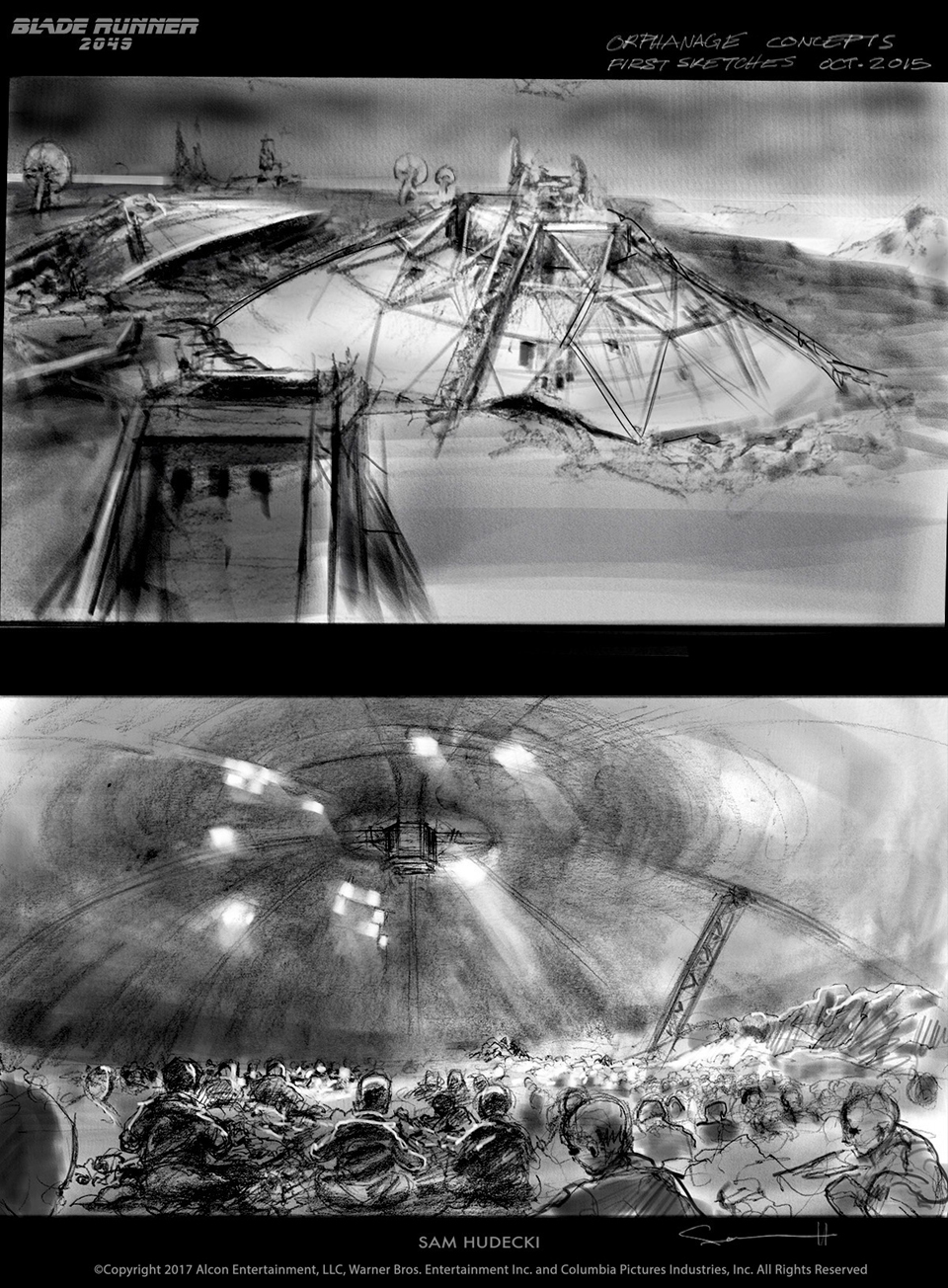
“Early sketchbook renderings of the orphanage in ‘Blade Runner 2049.’ This was part of our very first storyboard week in Montreal, when I worked with Denis and Roger. A very exciting first encounter with the world of the film.”
Through the looking glass
Sam’s work on 2012’s Antiviral so impressed the film’s producers at Rhombus Media that they signed him on to one of their next products: A film called Enemy, with director Denis Villeneuve and production designer Patrice Vermette (also a Kickass Canadian) attached.
“I’d gone from this small team that would sit for hours and watch wasps nests, to being on a major, major set, meeting a 20-person team that was doing things I love—storyboards and set designs—and working on all the challenges you have in the art department to realize an imagined world,” says Sam.
He recalls the day he first walked onto one of Patrice’s Enemy sets, an apartment inhabited by Jake Gyllenhaal’s character in the film. “I’ve been on many sets, but this one had a very distinct feeling,” says Sam. “There was incredible attention to detail, and the magic of walking into a space that is sitting in the middle of a studio and feels like it has a history was very impactful.”
Sam was also “immediately enthralled” by his first conversation with Denis. “We were talking about creating a strange space, and we started talking about the feelings that might be evoked,” says Sam. “That just kind of hooked me, because those were the kinds of things that I liked seeing in film, those were the kind of questions that I love being asked and I love asking.”
That initial collaboration has proven to be something of a stellar formation. Since Enemy, the trio has frequently reteamed, along with other key players including cinematographer Roger Deakins and editor Joe Walker. And Sam and Denis have become an inseparable pair, with Sam storyboarding all of Denis’ films to date since they first worked together.
“I’m incredibly lucky to have met people who are brilliant artists, brilliant thinkers, feel deeply and are just incredible influences,” says Sam. “(Denis and Patrice) are really wonderfully collaborative people who are encouraging to their whole teams. I think that creates a great place to delve into film, which is an immensely collaborative process.”
Early in pre-production, when the filmmakers can’t always be in the same location, they’ve taken to long Skype conversations. “We just leave it on and talk and inspire each other and bounce ideas back and forth until we get really excited about something,” says Sam.
Patrice, who has worked with Sam on Enemy, Prisoners, Sicario, Arrival and now Dune, calls those early Skype brainstorming sessions some of the most enjoyable of the entire process. “Sam has a wealth of imagination and sense of analysis,” he says. “(Our talks) always generate outside-the-box ideas, and concepts that survive the production and post-production process and make a definite visual distinction on our projects.”
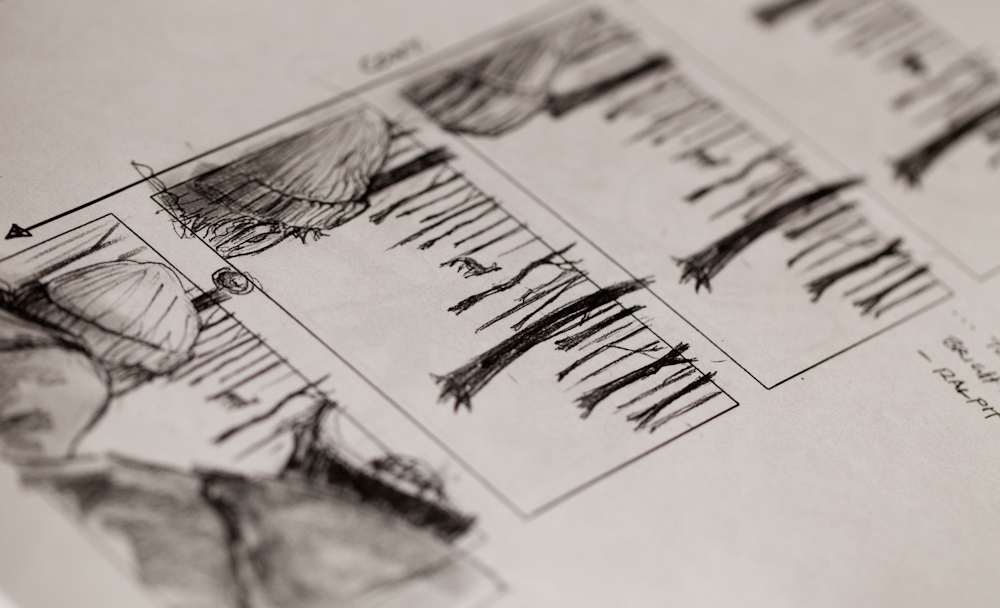
“‘Prisoners’ introduction.”
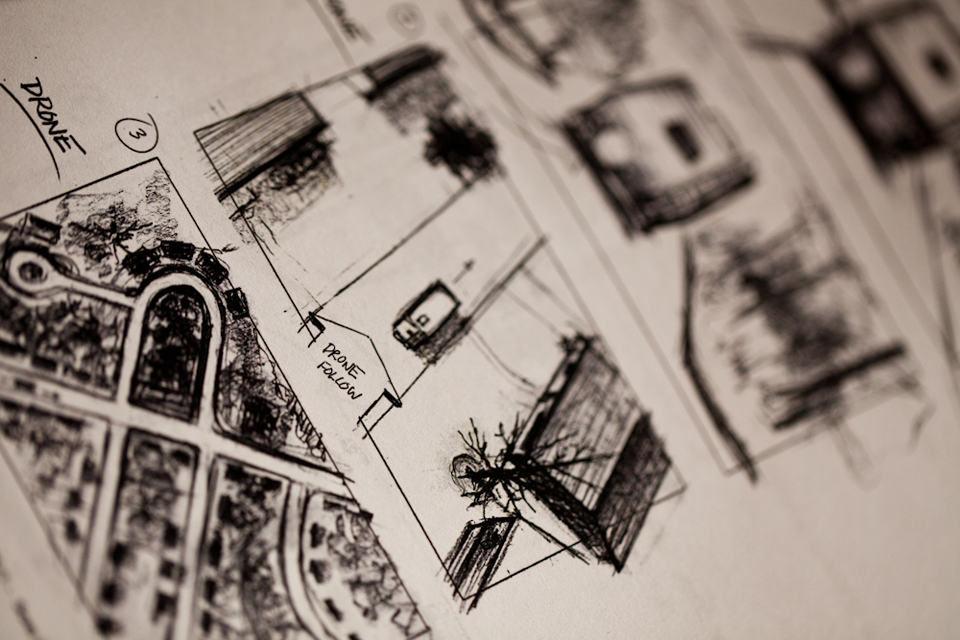
“The marauding RV in ‘Prisoners.'”
Joe, having collaborated with Sam on Sicario, Arrival and Blade Runner 2049, concurs. “The thing about Sam’s storyboards is that they go way further than just providing a shopping list of shots,” says Joe. “They’re a record of a cinematic world being figured out. They are gestural and atmospheric, while providing enough economy to allow everyone to make their input.”
That thoughtfulness and generosity in Sam’s work doesn’t happen by accident. At every stage, he makes sure to reflect on the film’s ultimate vision, even as he breaks it down panel by panel, and to leave space for other wavelengths to shine through.
“A lot of people think that you’re locking yourself into a film because you’re doing a storyboard… but I like the idea that you’re putting down kind of a guideline, and finding a safe ground that allows you to improvise and experiment within that,” says Sam. “The boards themselves are kind of a representation of a first idea and, ideally, capture a mood that everyone else will understand and work towards.
“I like that place where drawing leaves some empty spaces that allow you to fill them in with your imagination. I was always inspired by even the preparatory sketches for paintings, where there’s just an impression (of the final work), and if I can capture part of the mood and keep that inspiration churning as we start getting into the fine details, then that’s great.”
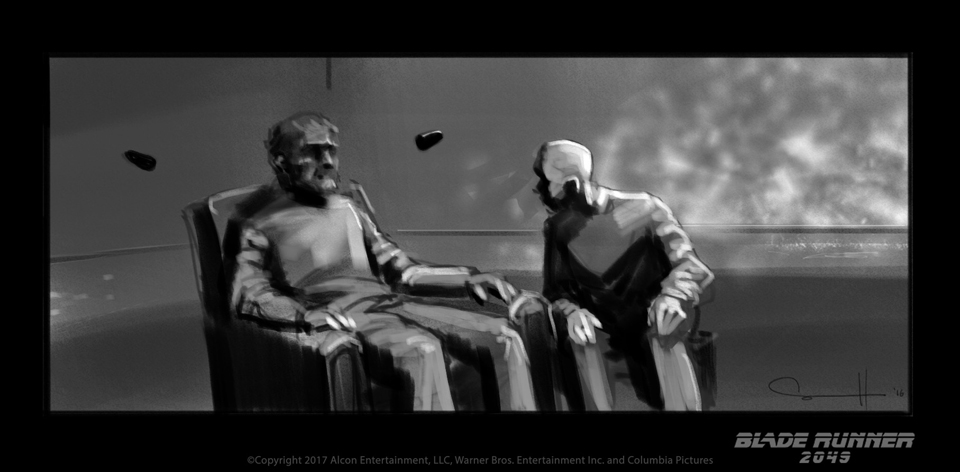
“A panel from the storyboard sequence where Deckard [played by Harrison Ford] is confronted by Wallace [played by Jared Leto].”
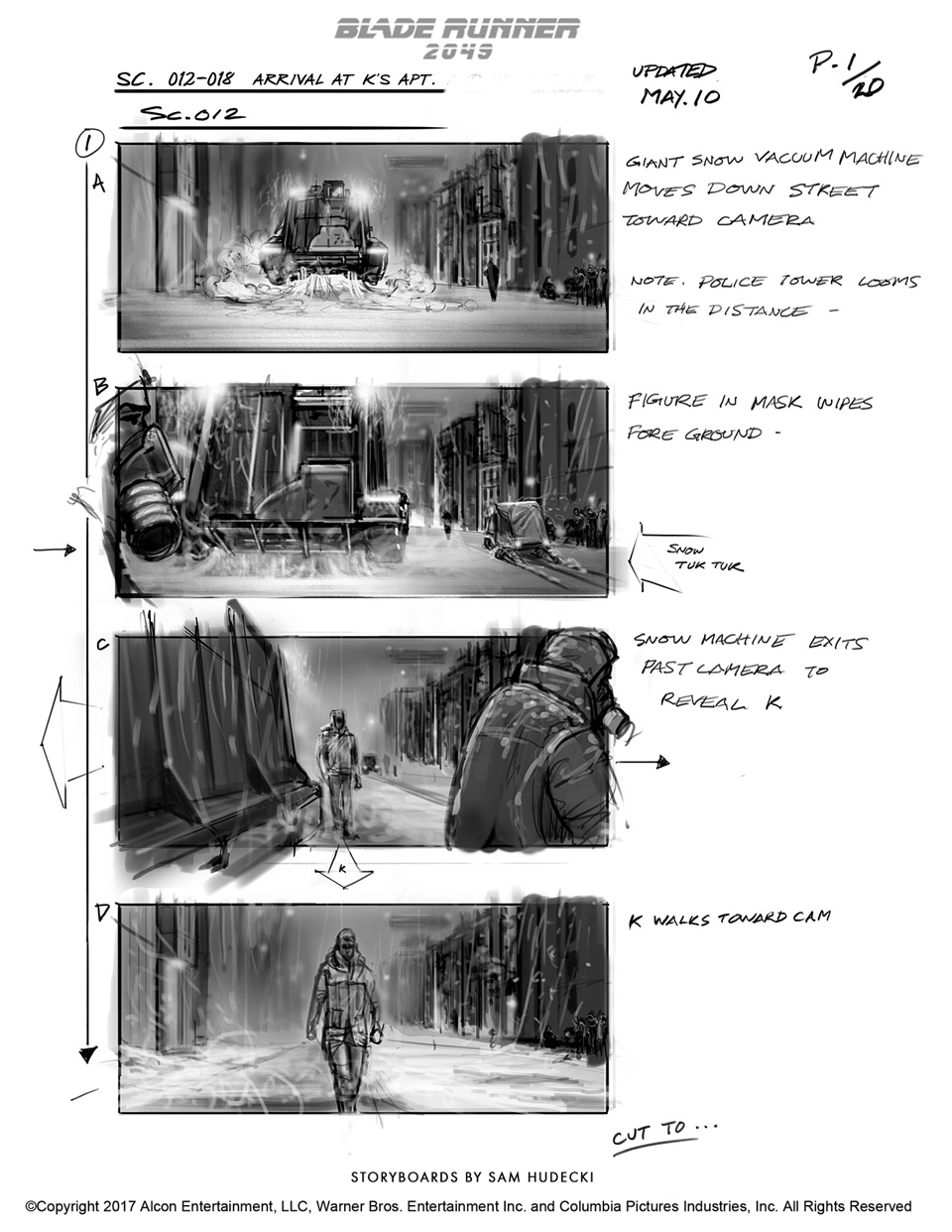
“Officer K’s [played by Ryan Gosling] apartment. Shot on location in Budapest.”
In recent years, Sam’s moveable “office” has brought him all over, from location scouting to on-set work, to those lengthy, fruitful Skype sessions, which he takes mainly from Toronto or Copenhagen. The contrast between those two places continually informs his relationship to Canada and his hometown. “I have a strong sense of connection with the north, and that only gains perspective from being away, being in a much older country like Denmark,” he says. “I’m inspired to see (Canada) grow and to see it continue to ask questions, because it’s so young.”
From wherever he’s based, his current work remains focused on storyboarding and concept design. But he’s excited by the possibility of someday delving into other roles, including director.
“I’m constantly searching for the right kind of story,” says Sam. “I describe (the creative process) as kind of a search. Storytelling, filmmaking, painting, music are ultimately about searching—at least I hope they are, ideally. In medicine, doctors use the term ‘practice’ because it’s always in progress, it’s always evolving. I like to apply that to art; it’s a practice, not something you perfect.
“I try to put as much feeling as I can into whatever work I’m doing. And I’m really lucky to work with people who are also doing the same. I hope to keep working with people who feel passionately about what they do, and I’m sure that the roles can change and evolve but I’m really curious to keep exploring. Whether that means someday trying directing a film, or creating more images and more stories that maybe take on other forms, that could be very exciting. It’s been a strangely unpredictable life so far.”
It stands to reason. Brilliance, like light, travels in all directions.
* * *
For occasional tidbits from Sam, you can follow @samhudecki on Instagram and Twitter.
For your viewing pleasure, here are a few more of Sam’s storyboards and concept designs:
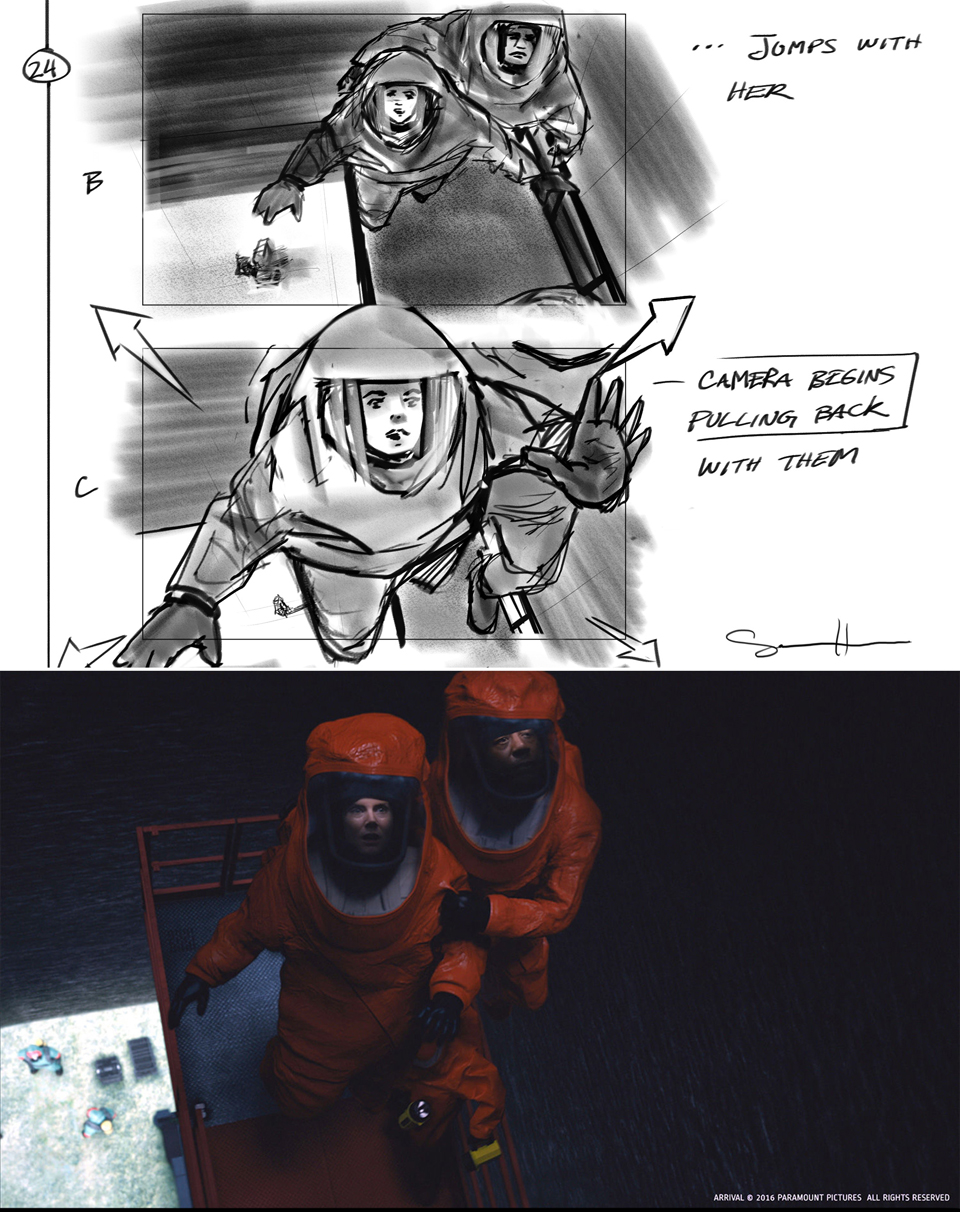
“Storyboards to reality in ‘Arrival.'”
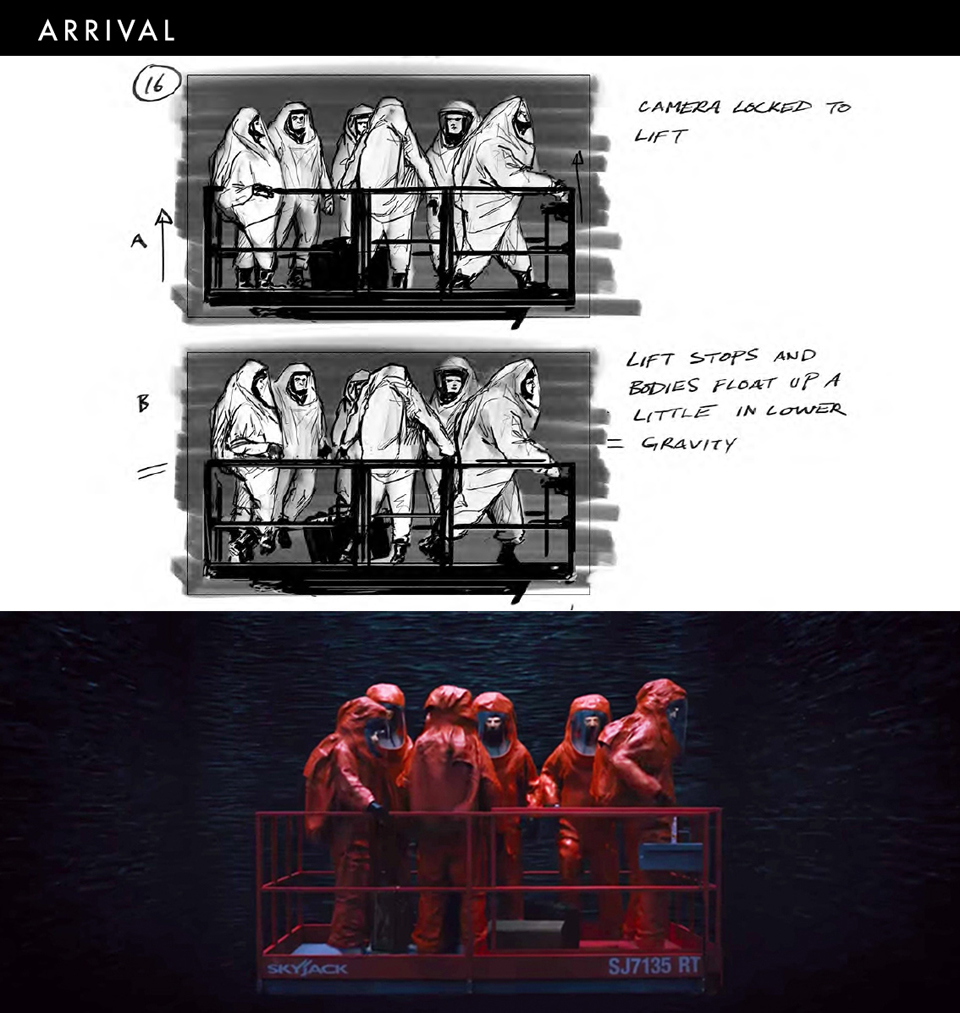
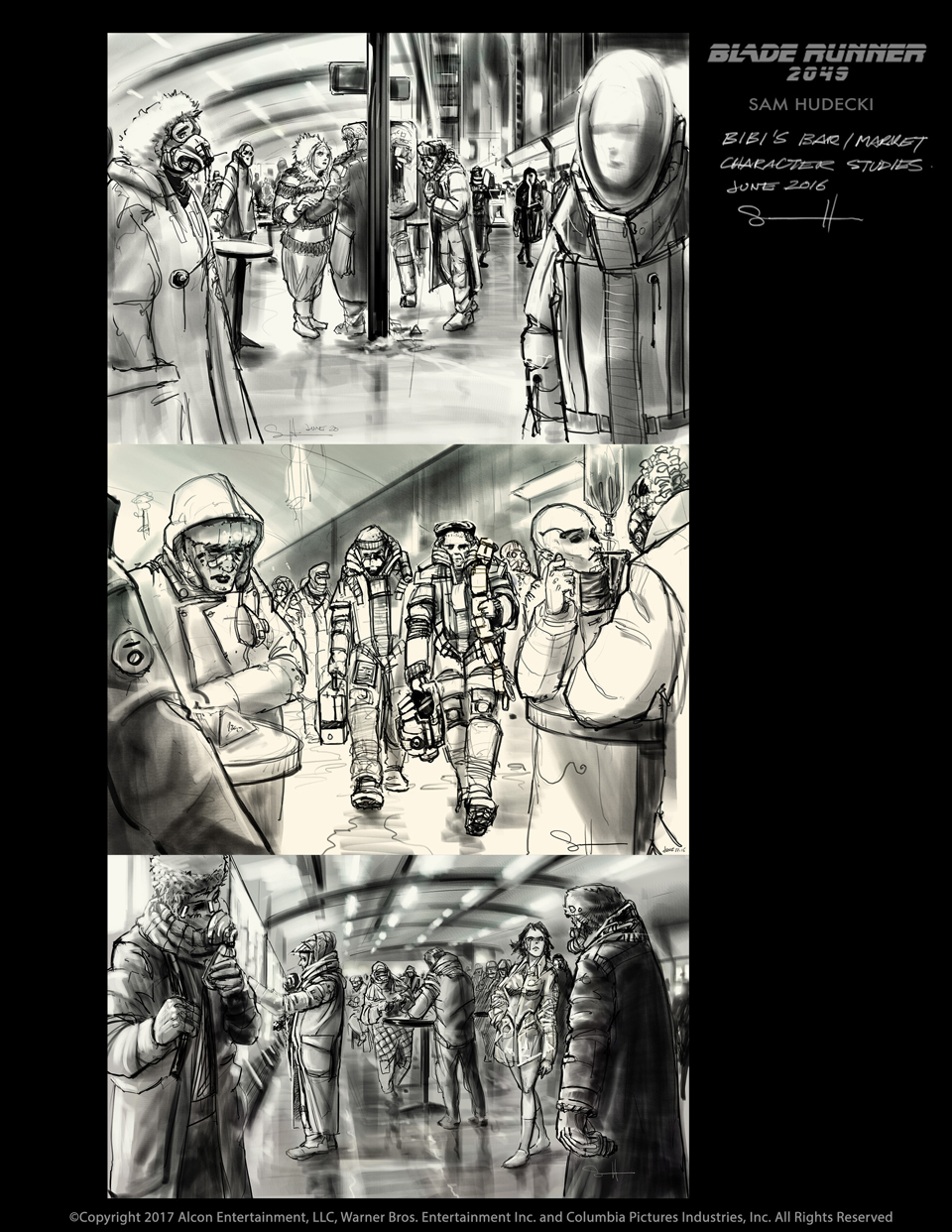
“These are some of the explorative mood drawings of the marketplace by Bibi’s Bar in ‘Blade Runner 2049.’ A look at how costumes and background characters might interact with the space.”
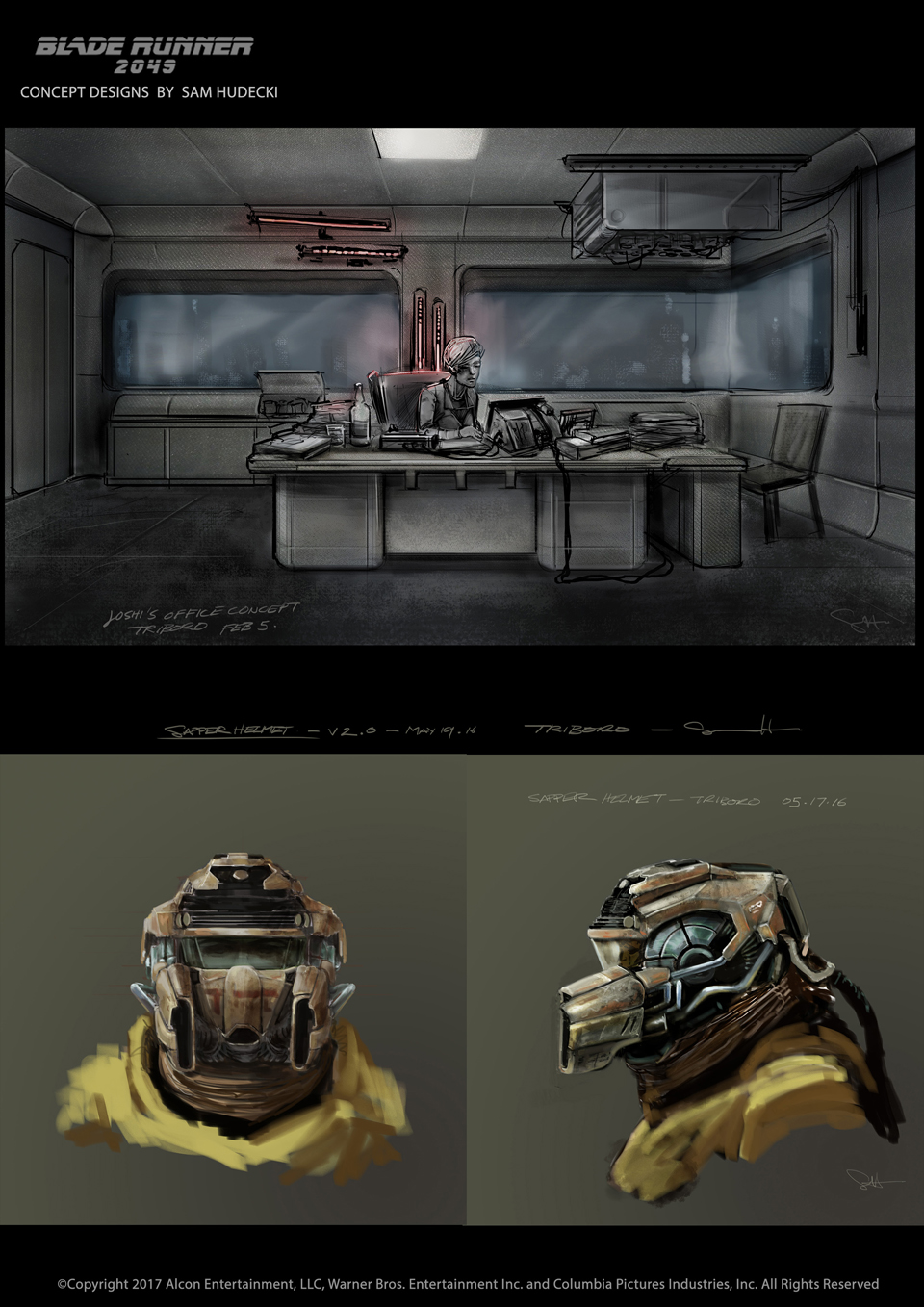
“An early concept drawing for Joshi’s [played by Robin Wright] office, and the design for Sapper Morton’s [played by Dave Bautista] helmet.”

“Early concepts and the final set for the ‘Blade Runner 2049’ police station.”
 Kickass Canadians
Kickass Canadians
Great piece on a fantastic artist. I worked with him on Splice and his process and attention to detail was apparent then. Congrats, Sam on finding a great path. M
Thanks for sharing, Matt. Glad you found the article!
What a great dive into a great artist’s mind, journey and process. Unusual to find such a great look at storyboard and pre-production for films. Also it is very exciting to read about the collaboration between those industry giants like Denis, Patrice and Roger. Thanks!
Lee, glad you found and enjoyed the article!